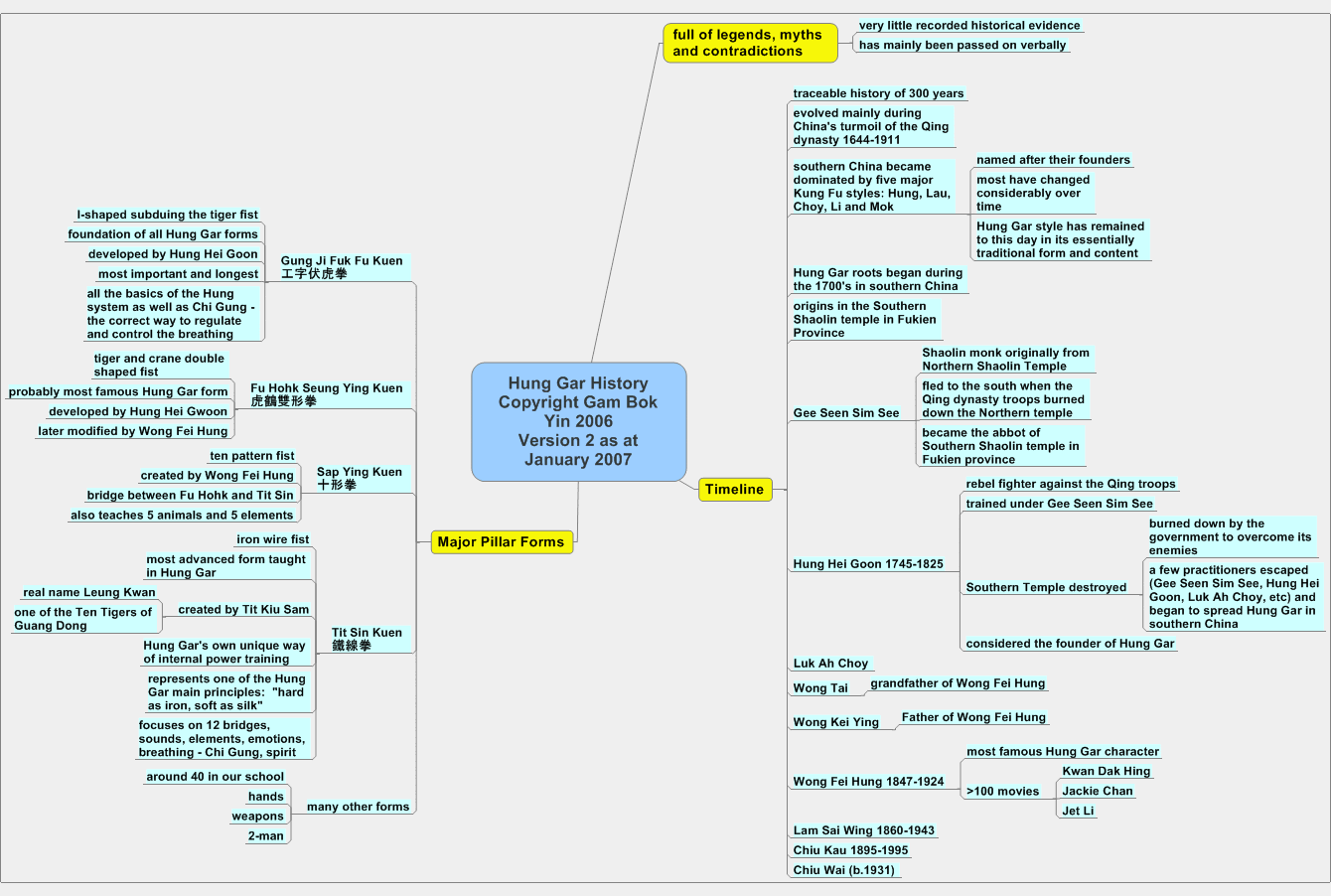Hung Family
Hung Gar was developed, and has been practiced, in the Shaolin temple in China for hundreds of years, emanating from the Shaolin Monk Gee Sin Sim See who escaped from the Shaolin temple after its destruction by the Manchu’s.
The founder of “Hung Gar Kuen” (literal translation = the Hung family fighting system) is generally acknowledged as Hung Hei Goon (1745-1825), a student of the Shaolin Monk Gee Sin Sim See. With its traceable history of around 300 years, the Hung Gar style has remained one of the most popular Kung Fu styles of Southern China.
The teaching of the Hung Gar system stresses honesty, integrity, balance in life, perseverance, health, and the respect of others.
The Hung Gar syllabus aims at developing proficiency in empty-hands, weapons, and sparring. It emphasizes the harmony of body, mind and spirit, focusing on health, strength, endurance, concentration, achievement, confidence and humility.
Hung Gar includes both internal and external methods, and although the execution of its movements seem to be hard, the style also incorporates both hard and soft techniques.
The techniques emphasize strong stances, powerful defense, iron-hard punches and blocks, deceptive hand techniques, power and suppleness.
Quotations by Gam Bok Yin About Hung Gar
- “Foundations in the feet and strong stances; mastery of balance; forces developed from the ground upwards through the legs; merged with the internal energies, spirit and breath; directed by the waist and body position; and focused, expressed and delivered through powerful blocks, punches, kicks, and other weapons.”
- “In a society conditioned to scientific analytical thinking, the acquisition of instant knowledge, expectations of effortless understanding, idolization of economic values, and immediate gratification, there are still those who can appreciate the rewards from the journey of learning a traditional art.”
- “Hung Gar has many ‘forms’, or pre-arranged fighting patterns that we teach, learn and practice. These incorporate open hands and weapons, and are an important means of preserving and transmitting useful fighting tactics as well as conditioning and developing stamina, fitness, balance, agility, breathing, focus, power, perseverance and understanding.
However the objective is not to become bound by these ‘forms’, but to transcend beyond them and pass beyond the limits of sheer movement and composition as we inevitably gain insights into ourselves and those that created the ‘forms’.
All great arts, including Hung Gar, transcend the mere rules of their format and composition.”



